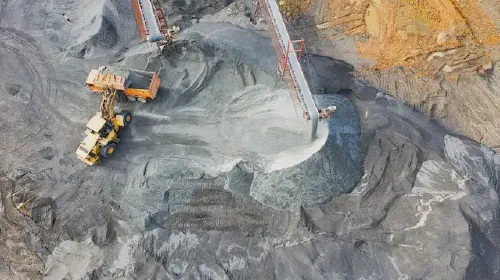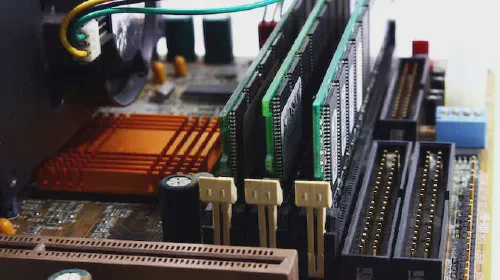PPS vs. FPPS vs. PPLNS vs. PPS+ - Mining Pool Payouts
Salomon Kisters
Jun 6, 2023This post may contain affiliate links. If you use these links to buy something we may earn a commission. Thanks!
Once a crypto enthusiast decides to venture into the mining of a particular coin, there are numerous factors that they must consider to ensure optimal results.
One of the most important factors to consider here is choosing the most appropriate mining plan that aligns with their requirements. When it comes to mining, there are various payment systems that one can choose from, including PPS, FPPS, PPS+, and PPLNS.
Each payment system differs in terms of how it handles payouts and earnings. However, before delving deeper into the settlement models, it is crucial to have a clear understanding of the terminologies used in crypto mining.
Today, we’ll explain those terminologies and go into great detail about the most popular mining pool payouts: PPS, FPPS, PPS+, and PPLNS.
Key Terms
Block Reward
The block reward is the term used to describe the freshly minted coins given to miners as a reward for solving a block. In the case of Bitcoin, for instance, the miner who solves a block gets 6.25 BTC. As we get closer to the maximum number of BTC, the reward amount decreases gradually.
Hash Power
A hash refers to the result of a hash function. Hash rate, on the other hand, is the rate at which a computer performs a task within the cryptocurrency code. This is usually measured in hashes per second. A higher hash rate enhances a miner’s likelihood of discovering the next block and receiving the associated reward.
Transaction Fees
Some networks like Bitcoin offer miners substantial transaction fees. These fees represent the total amount paid by Bitcoin users to execute transactions. It is worth noting here that in December 2020, the transaction fees were higher than 10%, which is a significant increase from the 3-4% of the block reward seen in December 2019.
Luck
Luck refers to the probability of success in mining. It is like a lottery, where each miner is given a ticket for the provided hashing power. For instance, if a miner provides 1 TH/s hashing power when the overall hashing power in the network is 10 TH/s, they will receive 1 of 10 total lottery tickets. The probability of winning the lottery (finding the block reward) would be 10%.
Mining Pool
Overall, the process of mining involves unlocking each block to obtain the reward within it. The more attempts or hashes a miner can perform per second, the greater the likelihood of receiving the reward.
Since individual miners may not possess enough hashing power to find blocks consistently, they join a pool that combines everyone’s hashing power. With more hashing power, finding blocks becomes easier. The reward is then divided among the miners based on the work they contributed, with a small fee going to the pool operator.
Pay-Per-Share (PPS)
The Pay-Per-Share (PPS) payment method is a popular payment method in the cryptocurrency mining industry. As mentioned earlier, each share is worth a certain value of BTC or any other mineable cryptocurrency. The worth of each share is calculated based on the probability of the number of shares needed for a pool to find a block.
This means that if the pool needs to send 1,000 valid shares to find one block or 6.25 BTC (as of mid-2023), then each share is worth 0.00625 BTC. The PPS payment method ensures that you get paid for each valid share contributed to the block, regardless of the network difficulties faced.
This payment method is quite straightforward and is calculated instantaneously. Moreover, it is worth noting that you will always get paid with PPS payment, no matter what the market conditions are. This payment method is a popular choice among miners because it is a stable and predictable payout system.
Overall, the PPS payment method is a reliable and effective way of getting paid for your mining efforts. It ensures you get paid for each valid share contributed and is calculated based on the probability of finding a block. This payment method is ideal for miners seeking a stable and reliable payout system.
Full Pay-Per-Share (FPPS)
Full Pay-Per-Share (FPPS) is a payment model mining pools use to distribute the block reward amongst miners. It is a variant of Pay-Per-Share (PPS), which is a payout method that guarantees miners a steady income. FPPS works similarly to PPS but offers a more comprehensive payment scheme. With FPPS, the pool will distribute not only the block reward but also the transaction fee reward.
When a block is found, the pool splits the BTC reward among the miners. However, there is also a reward for processing transactions on the blockchain. This fee is paid by those who perform transactions, and it is collected by miners. With FPPS, the pool will include the transaction fee reward in the payouts made to the miners. This is in contrast to PPS, where the transaction fee reward is not included.
The advantage of using FPPS is that it offers a more stable payout scheme to miners. Since the transaction fee reward is included, the miners receive a more consistent payout. This is because the transaction fee reward can vary widely depending on the number of transactions processed. With FPPS, the miners are guaranteed a certain amount for each block found, which makes it a more reliable source of income.
Overall, Full Pay-Per-Share (FPPS) is a more comprehensive payout scheme than Pay-Per-Share (PPS). It offers a more consistent payout to miners and ensures they receive both the block reward and the transaction fee reward.
Pay-Per-Last N Shares (PPLNS)
Pay-Per-Last N Shares (PPLNS) is a payment system designed to reward miners based on the number of valid shares contributed within a specific time window. Under this system, miners are only paid once the block has been found by the pool. The pool then goes “back in time” to check for valid shares contributed before the winning block. This time window is referred to as the PPLNS window.
Miners are paid based on the number of valid shares that they have contributed within the PPLNS window. This payment method is particularly useful for miners who have a steady connection and do not hop from pool to pool. However, if a miner disconnects from the pool before the block is found, they may lose all the shares that they have contributed.
All in all, the Pay-Per-Last N Shares (PPLNS) system is a fair and effective way of rewarding miners for their contributions. It ensures that only valid shares are rewarded and that miners are paid based on their contributions within a specific time window. For miners with a stable internet connection and a commitment to a single pool, this payment system can be an excellent choice.
Pay Per Share + (PPS+)
PPS+ (Pay Per Share +) is a unique blend of two mining modes mentioned above, PPS and PPLNS. The block reward for mining in PPS+ is determined by the PPS model. However, the mining service charge or transaction fee is calculated based on the PPLNS mode. This means that miners can earn additional income by receiving a portion of the transaction fee using the PPLNS payment method, which was not possible in the traditional PPS model.
This innovative combination of mining modes in PPS+ ensures that miners can have the benefits of both models and increase their overall profits. The PPS+ mode is particularly useful for small-scale miners looking for a stable income stream. Compared to PPS and PPLNS, PPS+ offers a more reliable and predictable payout structure.
Moreover, the PPS+ model significantly reduces the risk of orphaned blocks, which can negatively impact a miner’s earnings. With PPS+, even when a block is orphaned, the miner still receives their share of the transaction fee.
Overall, PPS+ is a reliable and profitable mining mode that offers the best of both worlds. By combining PPS and PPLNS, miners benefit from the stability of PPS and the additional income from PPLNS. It’s an excellent option for miners looking for a dependable income stream with improved profitability.
Conclusion
When considering which payment system is best for mining pools, the decision often hinges on a trade-off between risk and consistency.
FPPS may be preferred by miners, but it comes with the additional risk of variance or depends on pure luck. On the other hand, PPS+ is usually acceptable for mining pools with a large enough capacity to find blocks regularly.
However, it’s important to note that FPPS can be the most risky option for a pool operator, and this may result in a slightly higher fee being charged. In contrast, PPLNS pools present little to no risk for the operator, and as a result, they may offer very low fees to users.
Ultimately, the choice of the payment system depends on the specific needs and circumstances of the mining pool. A thorough analysis of the benefits and drawbacks of each option is necessary to make an informed decision.
Stay informed with the latest insights in Crypto, Blockchain, and Cyber-Security! Subscribe to our newsletter now to receive exclusive updates, expert analyses, and current developments directly to your inbox. Don't miss the opportunity to expand your knowledge and stay up-to-date.
Love what you're reading? Subscribe for top stories in Crypto, Blockchain, and Cyber-Security. Stay informed with exclusive updates.
Please note that the Content may have been generated with the Help of AI. The editorial content of OriginStamp AG does not constitute a recommendation for investment or purchase advice. In principle, an investment can also lead to a total loss. Therefore, please seek advice before making an investment decision.

Understanding Mining Pools: Collaboration for Cryptocurrency Mining
A mining pool is a collaborative effort among cryptocurrency miners to increase their chances of earning rewards by combining resources and working together to solve complex mathematical problems.

How Do Blockchain Miners Get Paid? | Explained in Detail
Learn how blockchain miners get paid by solving complex mathematical puzzles to earn cryptocurrency rewards like Bitcoin.

Honeyminer Cryptocurrency Mining App: Rise, Fall, and Challenges
Explore the rise, fall, and challenges faced by the Honeyminer cryptocurrency mining app, from its revolutionary entry into the market to its swift closure in 2021.
Protect your documents
Your gateway to unforgeable data. Imprint the authenticity of your information with our blockchain timestamp